Old but up to date. Heavy machine gun Vladimirov KPV
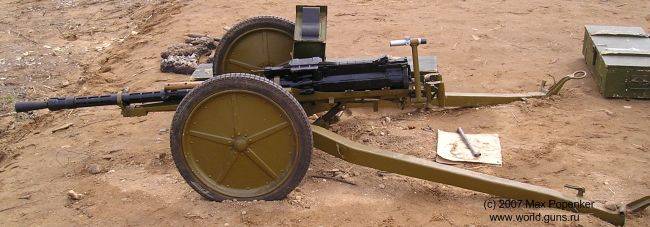
Infantry checkpoint on Kharykin's machine. Photo Modernfirearms.net
At the end of the forties, a heavy machine gun designed by S.V. was adopted by the Soviet army. Vladimirova - CPV. This weapon in various modifications has become widespread and has become one of the main models in the system of armaments of the ground forces. Despite its considerable age, the CPV is still in service and is used on a number of platforms. The successful combination of the main characteristics and other factors contributes to the continuation of its operation.
Way to success
The development of a promising heavy machine gun for combating light armored vehicles chambered for a 14,5x114 mm anti-tank rifle began in 1942. Several variants of such weapons were proposed, and in 1944 the project of S.V. was considered the most successful. Vladimirova. In the same year, the new machine gun passed the first tests and was recommended for mass production.
The first production of KPV was mastered by the Tool Plant No. 2 (Kovrov). The machine gun was produced in a small series and entered into separate units. In parallel, the design was fine-tuned, and new versions of the machines were created. These works were seriously delayed, and the final version of the machine gun for the infantry entered the training ground only in 1948. Based on the results of the tests, the CPV was officially put into service the following year.
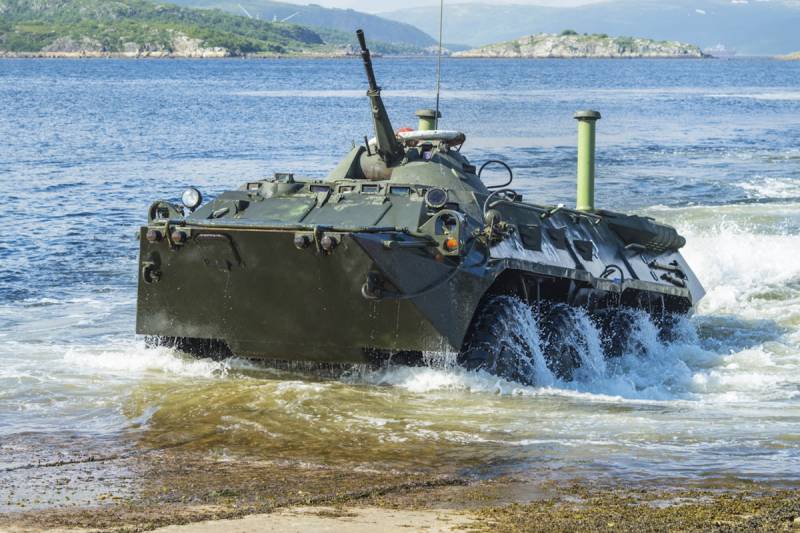
BTR-80 with KPVT and PKT machine guns. Photo by the Ministry of Defense of the Russian Federation
Simultaneously with the launch of a full-fledged series, the development of tank version of the machine gun under the designation KPVT. It was adopted in 1955 and put into production in the same way. Serial machine guns in one configuration or another and with a different composition of additional funds were sent to the troops, as well as to tank and shipbuilding plants.
According to known data, the Kovrov Plant named after. V.A. Degtyareva still continues to produce KPV(T) machine guns and supplies them to the Russian army. The machine gun is still used by the troops as part of the weapons systems of various ground armored vehicles, boats and ships. In addition, the Vladimirov machine gun was widely used abroad. Foreign armies and armed formations use both original Soviet checkpoints and licensed Chinese or Romanian products.
The KPV(T) is firmly taking its place in the system of armaments of various branches of the armed forces, and so far they are not going to give it up. Even within the framework of modern conflicts, incl. during the operation in Ukraine, this machine gun regularly shows its strengths and confirms its high potential.
Technical features
KPV(T) is an automatic weapon chambered for a powerful 14,5x114 mm cartridge, originally designed for anti-tank rifles. The machine gun is designed to combat lightly armored vehicles, various buildings, low-flying aircraft and helicopters, etc. The use of manpower or unprotected equipment is possible, but redundant.
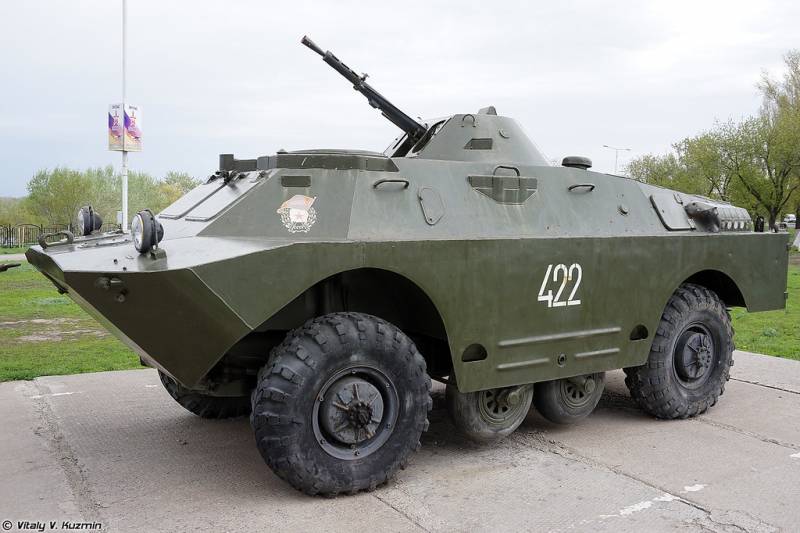
BRDM-2 with a unified machine-gun turret. Photo Vitalykuzmin.net
The body of the machine gun has a length of approx. 2 m, of which 1,35 m falls on the trunk (relative length - 93 klb). Product weight - 49 kg. The shutter, reciprocating mainspring and trigger are located in a cylindrical receiver. On top of the latter there is a box-shaped casing of the tape feed mechanism. The barrel is placed in a protective casing and is replaceable.
Machine gun automation uses the recoil energy of the barrel during its short course. The shot is carried out from the rear sear. The shutter is made swivel and when fired, it engages with the breech of the barrel with the help of lugs in the form of thread segments. Food is provided from tapes for 40 or 50 rounds; connection of separate tapes is allowed. The technical rate of fire of the CPV is 600 rds / min. The initial speed of the bullet, depending on the type of cartridge, reaches 1050 m / s.
The KPV does not have built-in fire controls. In the case of the infantry version, handles and a trigger on the machine are used for this. The tank modification is equipped with a remote-controlled electric trigger.
On different media
Together with the CPV, two variants of the machine for use in the infantry were adopted by the ground forces. The first was Kharykin's wheeled machine. This product weighing 105 kg had mounts for mounting the body of a machine gun and fire controls, as well as a pair of metal wheels and sliding beds. A stand was provided for mounting the sight. Such a machine made it possible to transport and tow a machine gun almost like an artillery piece.
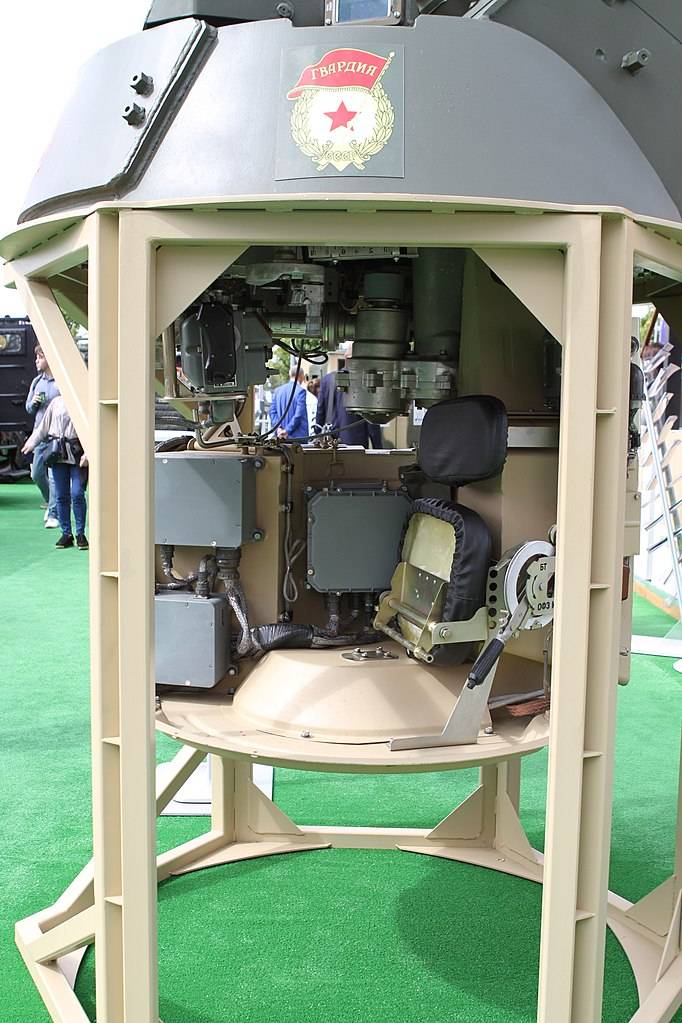
Turret part of the installation for armored personnel carriers and armored personnel carriers. Photo by Wikimedia Commons
The infantry also received a tripod designed by Baryshev. This product received three support frames for installation on the ground. They were equipped with a holding device for a machine gun with the possibility of aiming in two planes. The weight of the tripod was only 39 kg.
Tank modification of the KPV, equipped with a remote control, was intended for use on various armored platforms. As a machine gun coaxial with a cannon, the KPVT was used only on a few experimental tanks. Serial tanks and self-propelled guns of a number of models received such weapons on anti-aircraft installations for mounting on a tower / wheelhouse.
Starting with the BTR-60, domestic armored personnel carriers were equipped with the so-called. a turret machine gun mount with a KPVT heavy machine gun and a PKT product of normal caliber. Similar towers were used on vehicles of other classes and types, incl. on foreign. A number of turret carriers with KPVT are still in service in large numbers. For example, the BTR-80 is still one of the main vehicles of Russian rifle units.
KPVT was also used as part of several types of anti-aircraft installations. One such product was installed on the ZGU-1 mining rig. Towed products ZPU-2 and ZPU-4 carried two and four machine guns, respectively.
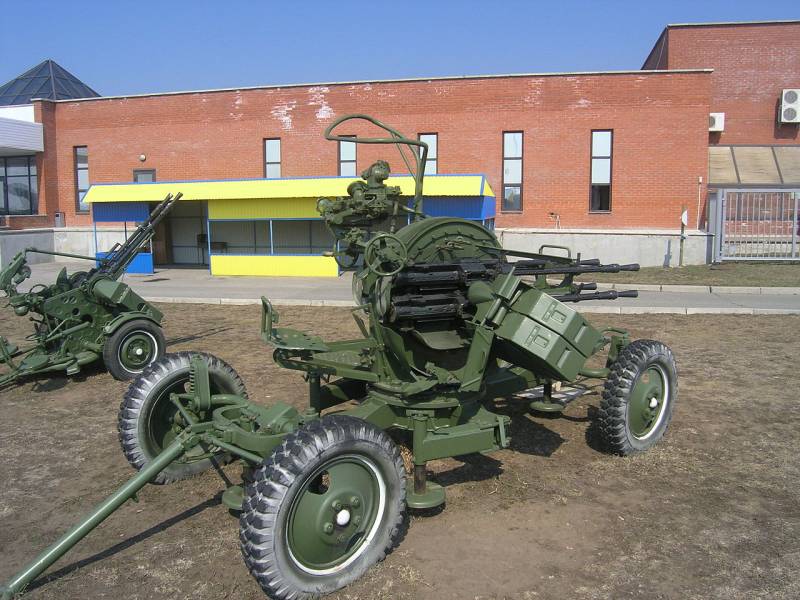
Anti-aircraft installations with KPVT. In the foreground - ZPU-4, on the left - ZPU-2. Photo by Wikimedia Commons
Several installations under KPVT have been developed for fleet. The simplest is the MTPU naval pedestal machine gun mount - it includes the pedestal itself and a movable machine gun machine with controls and a sight. Also, on different media, paired installations of several types were installed. Products 2M-5 and 2M-7 were pedestal turrets with horizontal and vertical placement of two machine guns. The 2M-6 turret mount carried two machine guns side by side and was equipped with full armor.
There was also "folk art". In conditions of armed conflicts, incl. in remote regions, KPV(T) machine guns were used both with serial and handicraft machines, carriers, etc. Particularly in the Middle East and Africa, pickup trucks are the most popular carriers of CPVs. A combat vehicle of this kind has obvious advantages over analogues with other weapons.
Obvious advantages
The future CPV was created as a means to combat enemy armored vehicles. This task was successfully solved, and the Soviet army received a new heavy machine gun with special characteristics. As it is now clear, the successful ratio of technical appearance and characteristics provided a uniquely long service life. KPV(T) is still in service, and they are not going to abandon it. Moreover, it firmly occupies its niche, and a replacement for it is not even planned.
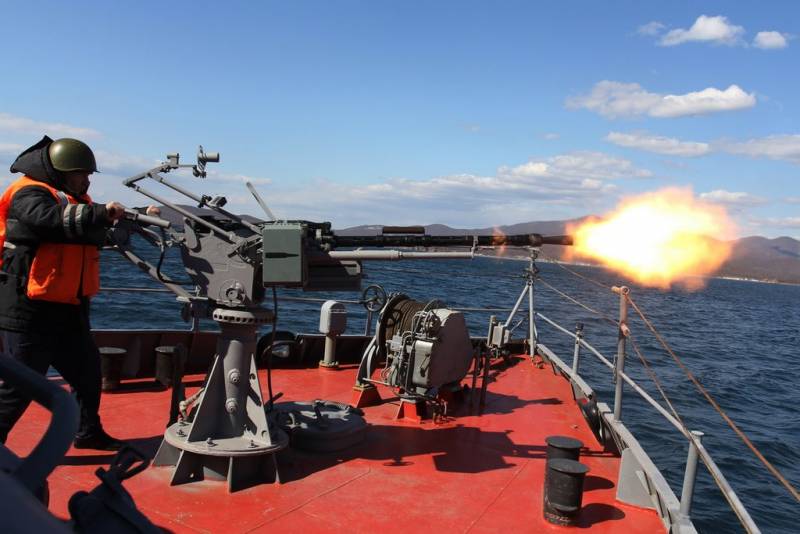
Marine pedestal installation MPTU. Photo by the Ministry of Defense of the Russian Federation
A promising machine gun was originally designed for a powerful cartridge of 14,5x114 mm. It was the ammunition that determined the characteristics of the future KPV (T), and also had a decisive influence on its prospects. The fact is that the initial velocity of a 14,5-mm bullet exceeds 1000-1050 m / s, and the muzzle energy reaches 31 kJ. In this regard, the Vladimirov machine gun at the time of its appearance surpassed even larger caliber systems. By today's standards, the characteristics of the CPV also remain at a high level.
The KPV can use 14,5x114 mm cartridges with several types of bullets. In all cases, the bullet has a large mass (more than 60 g) and has a hardened armor-piercing core. At a distance of 100 m, such bullets are capable of penetrating 40 mm of homogeneous armor when hit along the normal. At 500 m, penetration is reduced to 30-32 mm, at 800 m - to 20-21 mm. When firing at "soft" targets, a sufficient penetrating and lethal effect of the bullet is maintained at distances up to 7-9 km.
It is easy to see that with such firing characteristics, the KPV(T) machine gun is quite capable of hitting a wide range of modern and old armored combat vehicles of light and medium class. Depending on the distance, its bullets can penetrate side or even frontal armor. In addition, a bullet or its fragments can cause serious damage to the external equipment of an armored vehicle, leaving it without means of observation or weapons. The same applies to well-protected targets - the lack of through penetration does not exclude additional damage.
Both in the past and now, 14,5-mm machine guns of Soviet / Russian armored vehicles are considered by NATO as one of the typical threats. So, in the STANAG 4569 standard, which sets the requirements for armoring vehicles, the resistance to the B-32 bullet of a 14,5x114 mm cartridge is designated as level 4 of protection. The next level of threat are already 30-mm automatic guns.
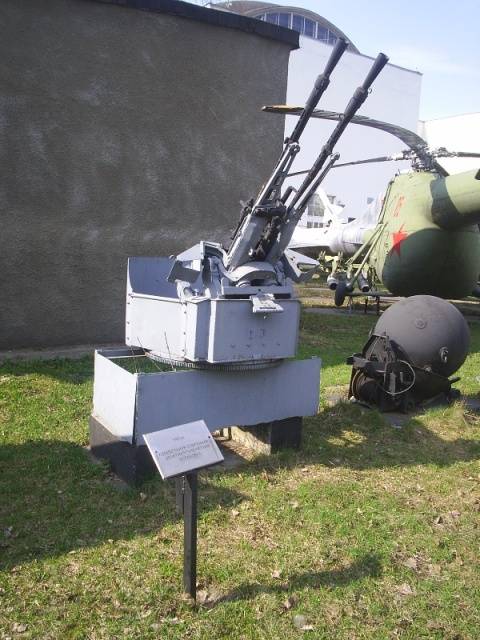
Installation 2M-5 for ships and boats. Photo by Wikimedia Commons
It should be noted that the positive qualities of the KPV(T) are not limited to high fire performance. This machine gun is quite simple to manufacture, operate and maintain. In addition, a successful design provides integration with various weapon systems and allows the machine gun to be used on a variety of platforms. All these factors complement the combat qualities of the weapon and increase its overall effectiveness.
Honored and up-to-date
Next year marks the 75th anniversary of the adoption of the Vladimirov machine gun by the Soviet army. Despite the great age, products of this type remain in operation and solve the assigned tasks. KPVT are still in service with motorized rifles and the fleet, although in other areas they have been replaced by other large-caliber systems.
In fact, the KPV was not the first or last domestic heavy machine gun. However, due to its special characteristics, it created an important niche in the army's weapons system and firmly entrenched itself in it. The machine gun copes with its tasks and is effectively used in different conditions, and replacement is not yet required for it. This means that the operation of the KPVT will continue in the foreseeable future.
However, the CPV itself determined its prospects. The widespread use of such weapons has affected the level of protection of equipment of a potential enemy. Now, to combat it, systems of a larger caliber are required, and therefore it can be expected that in the future the Vladimirov machine gun will still give way to other weapons. But a large number of available carriers of such a machine gun suggests that this will not happen soon.
Information